Tropias and Phorias (Video)
This video lecture covers ocular motility, specifically the difference between tropias and phorias. This is a simplified approach to detecting strabismus and documenting your findings. I’ve created an animatronic set of eyes out of cardboard to simulate these findings!
Screen Captures and Notes:
Tropia Definition:
Misalignment that is always there, even when both eyes are open and attempting
to work together. Large angle deviations are obvious. If small angle, you can
detect it with the Cover-Uncover test.
Phoria Definition:
Misalignment that only occurs some of the time, such as when the synchronization
between the eyes is broken by covering one eye. You can “break fusion” using
the Cross-Cover test.

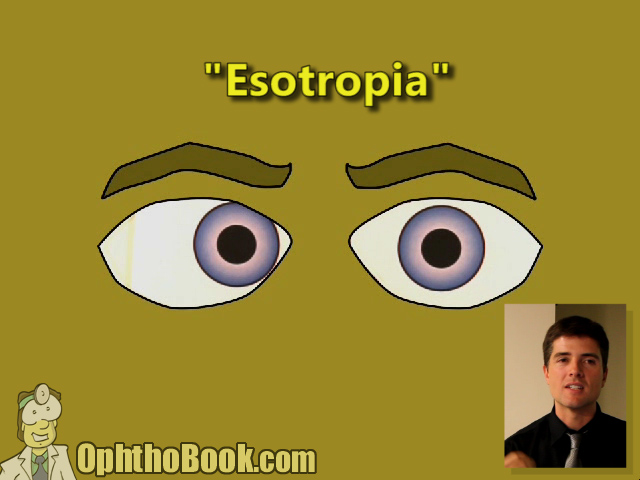
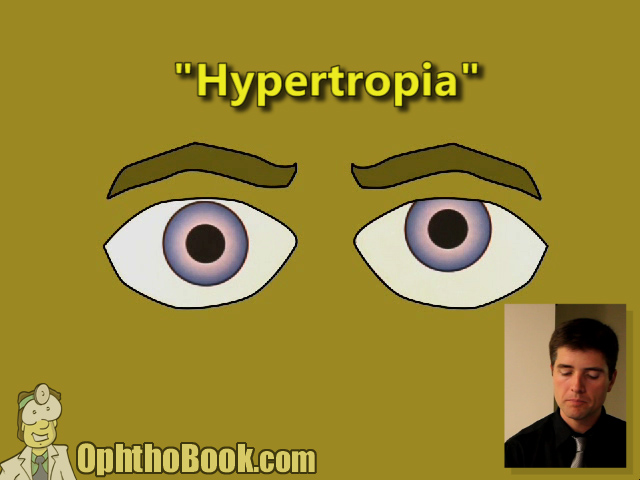
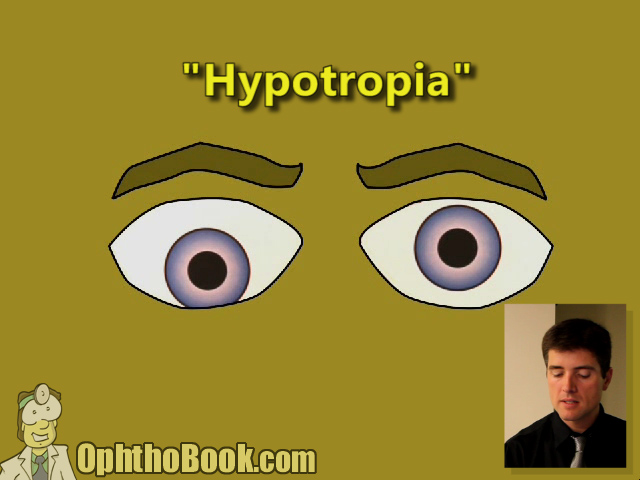

the cardinal directions.
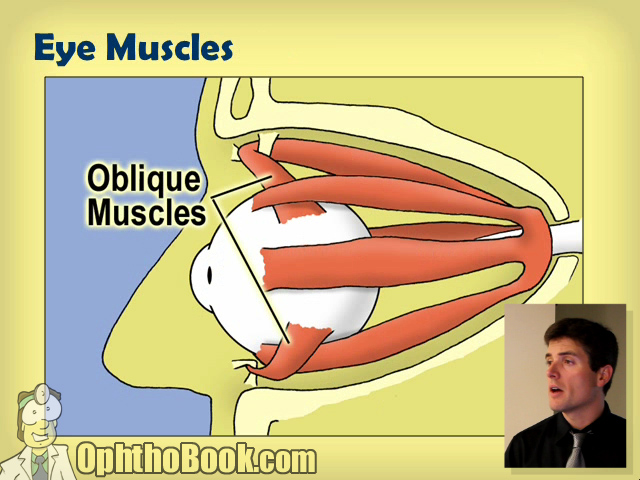
directions of eye movement.
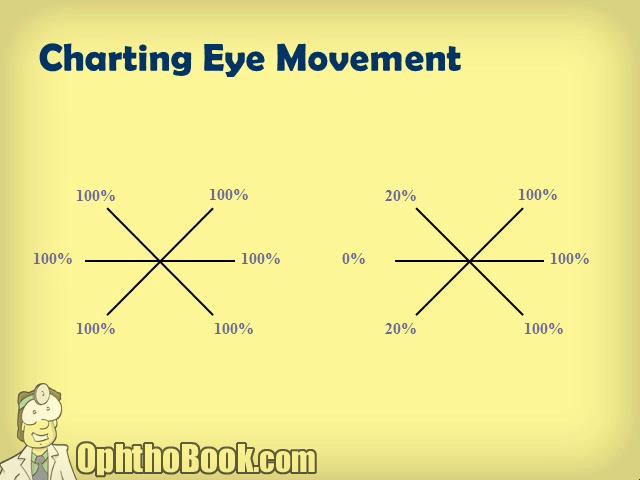
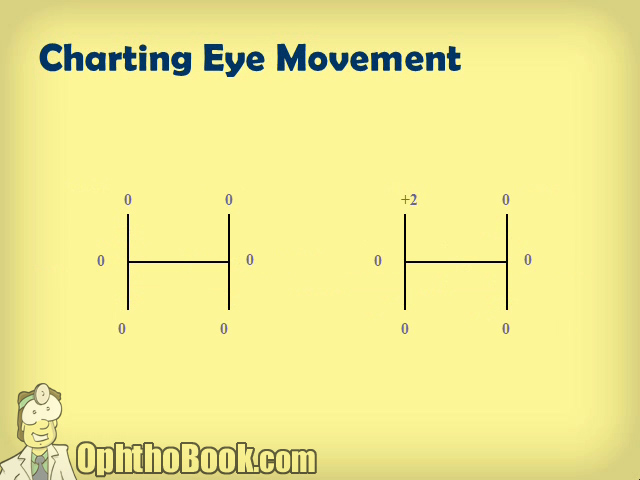
is normal, while “-4” is no movement.
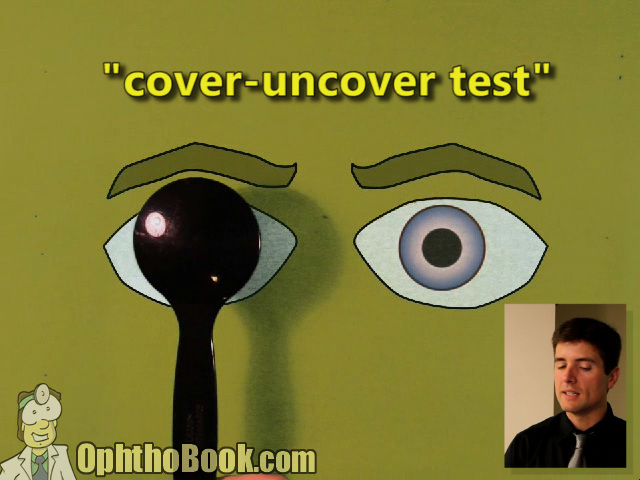
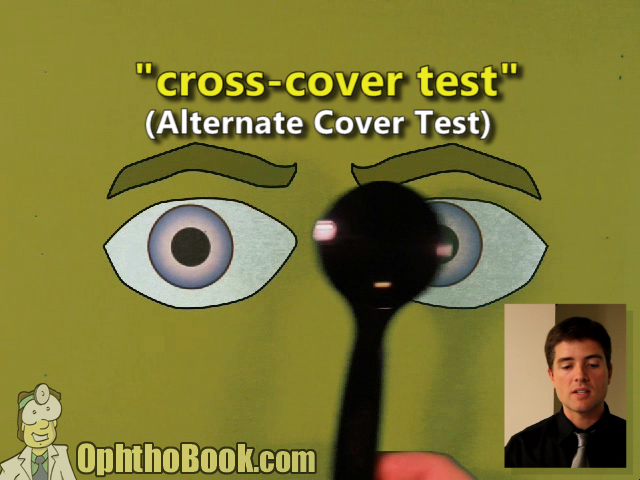
out phorias. This works because you break fusion between the eyes.
Wow! Great explanation and animations!
Thank you Dr.Root
Your presentation is very helpful and simple as you usually do..
keep good work up and thanks again.
Thanks, Dr. Root.
Thank you Dr Root for your good and scholar presentation
good job
Great explanation
Dr.root a salute to u.wat an amazing job you have done.sir please continue to do this noble work by giving out these great informative and intereting lectures.thank you.hope to meet you some time in the future.thank you again
Great explanation and we enjoyed your lecture! Thank You
it is more than great video.you simplified many obstacles.thank you very much.
Outstanding
well i am just 14 years old and i dont get the explnation so lets hope next time
GREAT PRESENTATION THANK YOU DR ROOT
This was a great works and did a a tremendous help in teaching our student to understand this topic.
Hi Dr.Root
In the frist I want say thank you for your lectures
I have a question when we do the glasses to the patient we but prism in front of the natural eye or in front of the eye in which have tropia
Thank you
Thank you very much for your nice videos
thank you for you intrsting lecture but we need more lecture to cover all point about squint
superb!!!! Simply the best
Thank you so much.This’s very usefull for my study.
simplified the basics of squint.can u add some more lectures about squint.
u r great sir. all dr teachers should like u. thank u very much
Thanks so much! Great video for distinguishing between phoris and tropias.
Dr.Root
I learnt retinoscopy prety well with the help of your video and now the difference between Tropias and Phorias. Your explanations are simply simple. Thank you so much.
Sir, I wish to see a animated/live demo of usage of JCC (Jackson’s cross cylinder).
Thanking you once again.
thank you very much for your excellent video
Wow great video! Thanks
I would like to point out that a you defined a tropia as a misalignment that is always there. A trope can be also be intermittent, and therefore not always there.
@ Aaron:
Thanks for the feedback. I purposefully kept the definition of tropia as simple as possible. You are correct, in that you can also have an “intermittent tropia.” You can also have an alternating tropia, convergence-related tropia, and many other “types” of tropia/phoria depending upon how you like to name things.
When I put this presentation together, I felt it safer to avoid these nuances. I feared that discussing the intermittent nature of phorias/tropias would muddy the waters for the beginner and make the primary difference (between phoria and tropia) that much harder to grasp.
Thus, the definition I used is simplified … but still useful and valid for a beginner. Perhaps I’ll go into further detail in a future lecture. Thanks!
Tim Root
Thanks a lot .
Thank you!! I am a medical student and i now can totally understand tropis and phoria. hope i can make a Mandarin version in the future. Love your work~~!!
i will like to know the difference betweent phorias and tropias.thank u.
Hi Tim,
Great lecture, very easy to follow. however i am a little confused as to what you meant by a ‘right esophoria’ (mentioned towards the end of the lecture). Ive always understood phorias being a bilateral misalignment of the visual axis, however you could have an esophoria which breaks down to alternating esotrpia…then breaking down further to maybe a right esotropia as the eyes fatigued with time.
superb sir. amazingly simple presentation.
thank u so mch sir ..ur lectures r so marvellous
.They should be a part of the curriculum..
Thanks alot Dr Root.
You really equiped me with ellaborate informations.
Keep it up.
great presentations,you have fans in morocco
you are the best sir…always checking this site…please keep adding more…we tuely love your efforts
thank you so much DR ROOT &thanks GOD you are there for me am so greatful for your effort to make ophthalmology easier for us.
Amazing! Thank you sooooooooooooooooooooooooooo much!
Por favor… que sea en español!
Excellent simple tutorial
THANK YOU SO MUCH DR. ROOT
Thanks alot Dr Root . Iam medical student from egypt and I love your videos alot
keep it up dr root
what are the yoke muscles involved in dextroelevation?? please give some explanation as well
A special thank you Doc & two thumbs up … YOU ARE GREAT.
its a very nice video& lecture that i appreciate………
thank you for the care and Great work Doc we appreaciate your concern keep Posting them
excellent,outstanding
I have just returned to COA after 15 years away. Your videos have been a lifesaver!!! Thanks so much for posting these, I’ve watched every single one!
fantastic videos lot of conceps cleared thnks
I’m a optometies in china,I love your thinking,it help me know something more easy.I try to translate your lectur. I think it will be very helpful.I hope that you can give me some advice。
Thank you root for the lecture and video simplified
Amazing video Dr Root! Big fan from Australia, loving your work!
it was a nice video . thank you so much to upload this video..
Do u incorporate a prism into a spectacle,is it possible? And how is it done. Thank u
thanks Dr.Root the lecture was very helpful and useful
Simplicity is a difficult art and you complete mastery of it.
Thank you
hi may I ask how does our eyes synchronize and how does a cross-cover test break the fusion?
Thanks for giving us such an difficult topic in a simple and easy way, otherwise it was not clarified to me since last two years in ophthalmic classes
thank you very much
Hi Dr Root ,
amazingly simplified explanation …
thank you
keep posting !!!
Nice presentation that makes ophth interesting
Thanks Dr
Pls can you post for us qns…??
God job…
I will always refer to your videos when in doubt and/or need a “refresher” course on a topic. Thank you for your awesome videos, they help in more ways than one! In the future (or if there is a video already made and I’m just not finding it), a tutorial on what the prisms would look with patients dx w/eso, exo etc.. would be super helpful! Again, your videos are always appreciated.
Thank you Dr.Root
I would like to recommend adding corneal reflections first before anything else, then doing a cover test and then looking at extra ocular movements. Orthoptic skills come from a cover test primarily and then EOM smooth pursuits complete the picture.
🤩Wow Thanks you Doctor I can understand easily
Sehr viel Arbeit und viel Mühe dahinter gesteckt, vielen herzlichen Dank Dr. Root.
War sehr hilfreich.
Thank you very much !
woah u made it so easy for me I was fed up with this topic, THANK YOU SO MUCH MAN!!